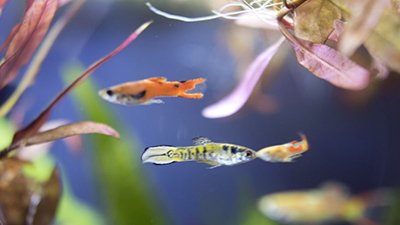
Peppered moths—back on the agenda?
Britain’s newspaper, The Independent ran a story on 25th August 2007 that Kettlewell’s famed peppered moth experiments had been vindicated as evidence of evolution occurring in nature.
Britain’s left-leaning newspaper, The Independent (which recently featured the Creation Museum in a lengthy article) ran a story on August 25, 2007 that Kettlewell’s famed peppered moth experiments had been vindicated as evidence of evolution occurring in nature. The article claims that Kettlewell’s experiments were right, that the population distributions of peppered moths are a good example of evolution in action, and that those naughty creationists have got it all wrong, as usual. However, both the article’s author, Independent Science Editor Steve Connor, and the researcher, University of Cambridge Professor Michael Majerus, are disingenuous in their criticism of creationists and their claims about the research.
What the Independent article fails to acknowledge is that criticism of the peppered moth experiments did not hinge on whether or not the population observations were correct.
Connor writes: “Creationists smelt blood. The story of the peppered moth became a story of how Darwinism itself was flawed—with its best-known example being based on fiddled data.” He reports Majerus as saying, “The peppered moth story is easy to understand, because it involves things that we are familiar with: vision and predation and birds and moths and pollution and camouflage and lunch and death. That is why the anti-evolution lobby attacks the peppered moth story. They are frightened that too many people will be able to understand.”
This AiG website has featured information about the peppered moth saga before.1 This species of moth (Biston betularia) exists in two forms—a light variety (typica) and a black variety (carbonaria). (Actually the moth Biston betularia shows a continuous range of pigmentation from relatively lightly peppered to darkly pigmented. The darker ones have been arbitrarily assigned to a different type.) The account was that the light-coloured variety could be seen more easily on the dark-coloured bark of trees in heavily polluted areas. Therefore, birds would more easily eat the light-coloured variety in such areas, causing a greater percentage of dark-coloured moths. Similarly, in pollution-free areas, the light-coloured variety would predominate. There is some evidence that such population distributions do indeed occur.
What the Independent article fails to acknowledge is that criticism of the peppered moth experiments did not hinge on whether or not the population observations were correct. It was the experimental methodology and the conclusions that were criticized. If the population distribution evidences are correct, then this is no problem for creationists. After all, we have here an example of moths evolving into ... well, moths. This involves a rearrangement of genetic information that already was in existence. It does not involve an increase in genetic information of the kind that would be required for “molecules-to-man” evolution.
Kettlewell’s techniques were first criticized not by creationists, but by fellow evolutionists. It is alleged in Judith Hooper’s book, Of Moths and Men, that some of the famous photographs were taken by gluing dead moths to trees. This is because the moths do not tend to settle on the bark, but fly up into the canopies. A criticism of this methodology does not negate the population observations, and if Majerus now has proof that birds are eating the relevant amounts of moths, then creationists would have no problem with that.
It is noteworthy that the Independent article suggests that there were flaws with Kettlewell’s methodology. The article ought to state what these flaws were; otherwise, the accusation that “scientists at the centre of these experiments set out to prove the story irrespective of the evidence” still stands. In a scientific study, the end does not justify the means. Even if the conclusion is correct, the experiment is rendered invalid if the methodology is dishonest.
The article claims that peppered moths were “the quintessential example of Darwinism in action.” This is not correct. If true, then the peppered moth experiment is an example of natural selection (which creationists accept), not evolution. Despite the use of the term Darwinian natural selection, true natural selection merely involves the selection of attributes genetically, for example, by the environment. Natural selection does indeed happen—it can be observed. Darwinian natural selection (i.e., natural selection, for a Darwinist assuming molecules-to-man evolution), however, would require additional genetic information.
Majerus is right on one point. The peppered moth story is indeed easy to understand. Inappropriate methodology and impossibly exaggerated claims have once again been used in a vain attempt to prove the unprovable: molecules-to-man evolution—because it didn’t happen.
For more information:
Please let us know what you think about the articles you see on the AiG website and tell us what types of articles you would like to see in the future. Your feedback helps us make this site even better.
Footnotes
- For example: An Examination of Error
Recommended Resources

Answers in Genesis is an apologetics ministry, dedicated to helping Christians defend their faith and proclaim the good news of Jesus Christ.
- Customer Service 800.778.3390
- Available Monday–Friday | 9 AM–5 PM ET
- © 2025 Answers in Genesis





